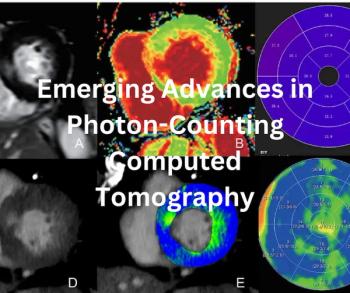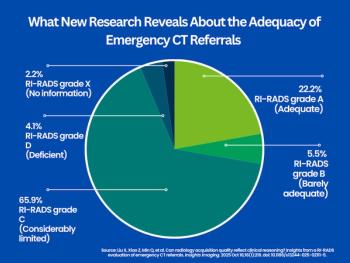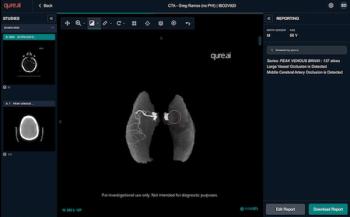
CT Lung Screening Beats X-Ray - Now What?
Heavy smokers screened for lung cancer with low-dose helical CT scans had a 20 percent lower mortality risk than those screened with standard X-ray, according to a large scale study recently published in the New England Journal of Medicine. So should the lung cancer screening policy change?
Heavy smokers screened for lung cancer with low-dose helical
The study recruited 53,454 current or former heavy smokers for the National Lung Screening Trial (NLST), imaging them once a year for three years with either a standard X-ray or a low-dose helical CT. The trial, sponsored by the National Cancer Institute, recruited at 33 U.S. sites, using participants ages 55 to 74 with at least a 30 pack/year history and no symptoms or history of lung cancer.
Researchers found that the series of CT scans were positive an average of 24.2 percent of the time, while only 6.9 percent of the chest X-rays were positive. Most of these (96.4 percent and 94.5 percent respectively) were false positives, confirmed mostly by follow-up CT scanning which showed no changes over time. During the study, 346 participants died from lung cancer in the CT arm, while 425 died from the same cause in the chest X-ray group.
While both types of screening detected adenocarcinoma and squamous cell carcinoma at an early stage, CT scan was able to detect it at the earliest stage more often than X-ray. Neither screening technique was good at finding the more aggressive small cell carcinoma.
One of the interesting findings was that the CT group had a 7 percent lower risk of dying from all causes, not just lung cancer, according to Kavita Garg, MD, a principal site investigator and professor of radiology at the University of Colorado, Denver. She said that one reason for the lower morbidity in CT group was probably due to early detection of coronary artery disease or emphysema, and the additional studies done if subjects were found to be at risk for those. She said that subjects in the CT group might have also changed their behavior as a result of the additional testing, with interventions like lipid-lowering medications. Garg noted that the screenings found some incidental detection of other cancers.
Though Garg said she felt the study results were promising, she doesn’t feel there should be any major policy changes yet on CT lung cancer screening for heavy smokers. “There are a number of causes and concerns before advocating for general population-based screening,” she said. In addition to addressing radiation exposure issues, they need to figure out how to deal with false positives, and analyze the cost effectiveness of the screening, Garg said.
In this high-risk population, they still needed to conduct 400 CT scans to detect one cancer. She added that even if the CT uncovers a small cancerous malignant nodule, “that doesn’t necessarily result in clinical symptoms,” she said. “They might die not because of it, but with it.”
Indeed the
Newsletter
Stay at the forefront of radiology with the Diagnostic Imaging newsletter, delivering the latest news, clinical insights, and imaging advancements for today’s radiologists.

































